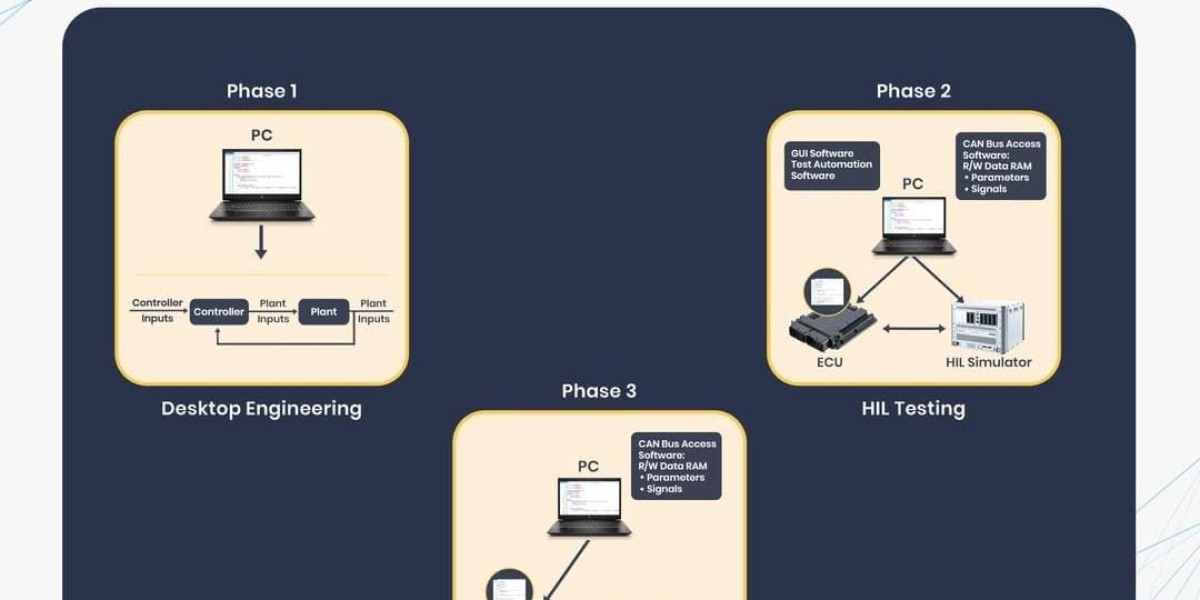Embedded control software systems are at the heart of modern intelligent devices. From automotive engines and industrial machines to medical devices and consumer electronics, they enable the real-time monitoring and control necessary for automation, precision, and efficiency. As the world shifts towards smart technologies, the role of embedded control software becomes increasingly vital in shaping how systems operate, communicate, and adapt.
What is an Embedded Control Software System?
An embedded control software system is a specialized software program designed to manage, monitor, and control the functions of embedded hardware systems. It operates within a constrained environment—usually on a microcontroller or processor—and is tightly integrated with sensors, actuators, and other components.
Unlike general-purpose software running on computers or smartphones, embedded control software is tailored to specific hardware and performs dedicated functions. It often includes control algorithms, hardware interface drivers, real-time decision-making logic, and communication protocols—all designed to work reliably under strict timing, safety, and power constraints.
How Embedded Control Systems Work
Embedded control systems typically operate in a closed-loop configuration. The system continuously monitors physical inputs via sensors (e.g., temperature, pressure, motion), processes the data using control algorithms, and then sends commands to actuators or other components to produce the desired effect (e.g., turning a motor, opening a valve, adjusting speed).
Key functions of embedded control software include:
Data acquisition: Collecting input from sensors.
Signal processing: Filtering or converting data into usable formats.
Control logic execution: Making decisions based on programmed rules or mathematical models.
Output generation: Activating actuators, displays, or communication interfaces.
Communication: Transmitting data to other systems or networks via protocols like CAN, I2C, SPI, or Ethernet.
Core Components of Embedded Control Software
Real-Time Operating System (RTOS)
Many embedded control applications require deterministic, real-time behavior. An RTOS manages task scheduling, resource sharing, and interrupt handling to ensure critical operations are performed within strict deadlines.Control Algorithms
These are mathematical or logical routines (e.g., PID controllers, state machines) used to regulate system behavior. For instance, in a drone, the flight controller uses algorithms to maintain stability and direction.Device Drivers
Drivers provide the software interface between the control system and the hardware peripherals like sensors, motors, timers, and communication ports.Firmware
Firmware is the low-level software permanently programmed into hardware. It handles boot-up, initialization, and core hardware control, acting as the foundation for higher-level control logic.Communication Stack
Many embedded systems must exchange data with other devices or networks. This is handled through communication stacks implementing protocols like Modbus, CAN, UART, TCP/IP, and others.
Applications of Embedded Control Software
1. Automotive Systems
Modern vehicles use dozens of Electronic Control Units (ECUs) powered by embedded software. These systems control engine timing, fuel injection, braking (ABS), airbag deployment, and advanced driver-assistance systems (ADAS). Control software ensures real-time response to sensor data, enabling safe and efficient vehicle operation.
2. Industrial Automation
Programmable Logic Controllers (PLCs), robotic arms, and CNC machines use embedded control systems to manage complex sequences of operations. They are essential in manufacturing, assembly lines, process control, and predictive maintenance.
3. Medical Devices
Medical equipment like infusion pumps, ventilators, ECG monitors, and implantable devices rely on embedded control software for real-time data analysis and critical response. The software must comply with stringent regulatory standards and offer high reliability.
4. Consumer Electronics
Devices like washing machines, microwave ovens, smart TVs, and thermostats include embedded control systems that govern user interfaces, timing operations, and power consumption.
5. Aerospace and Defense
Mission-critical systems in aircraft, satellites, and defense equipment rely on embedded control software for navigation, communication, and safety systems—where failure is not an option.
Advantages of Embedded Control Systems
Real-time performance: Ability to respond instantly to external events with deterministic timing.
Efficiency: Optimized for low power consumption, small size, and high reliability.
Customization: Specifically designed for the device or system it controls.
Compactness: Enables integration into small or portable devices.
Automation: Supports autonomous operation without human intervention.
Challenges in Embedded Control Development
Resource Constraints: Limited memory, CPU power, and storage demand efficient programming and optimization.
Debugging Complexity: It’s difficult to test and debug real-time, low-level systems without interrupting operations.
Security Risks: As more systems are connected to networks (IoT), embedded systems become vulnerable to cyberattacks.
Compliance and Safety: Meeting industry standards (like ISO 26262 for automotive, or IEC 62304 for medical) adds complexity to the development process.
Scalability and Upgrades: Updating software in the field, especially in remote or critical devices, is a major challenge—often solved through Over-The-Air (OTA) updates.
Future Trends
Edge AI: Embedded systems are increasingly integrating machine learning models for real-time decisions without cloud dependency.
Model-Based Development: Tools like MATLAB/Simulink and SCADE are being used to simulate and generate code from system models.
IoT and Connectivity: Embedded controllers are becoming a key part of smart grids, homes, and cities by enabling real-time data flow and automation.
OTA Updates: Future-proofing embedded devices through secure, remote firmware and software updates is becoming standard practice.
Conclusion
Embedded control software systems are the invisible force driving the modern digital and automated world. From the simplest thermostat to the most advanced robotic system, they provide the intelligence, responsiveness, and reliability that users expect. As technology advances, the scope and complexity of these systems will only increase—making embedded software design one of the most dynamic and impactful fields in engineering today.







